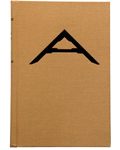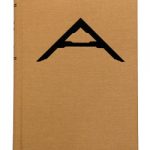We may receive a commission when you use our affiliate links. However, this does not impact our recommendations.
 If you read the woodworking message boards and blogs, you’ve likely read a little bit about Christopher Schwarz’s latest book, “The Anarchist’s Tool Chest” (Lost Art Press). It’s a mix of the philosophy of social mutualism, a list of hand tools Chris finds essential in his shop, and how-to on building a stout tool chest based on historical examples. And we now have it in our store (and you can read what Chris has to say about it on his blog).
If you read the woodworking message boards and blogs, you’ve likely read a little bit about Christopher Schwarz’s latest book, “The Anarchist’s Tool Chest” (Lost Art Press). It’s a mix of the philosophy of social mutualism, a list of hand tools Chris finds essential in his shop, and how-to on building a stout tool chest based on historical examples. And we now have it in our store (and you can read what Chris has to say about it on his blog).
I’ve read “The Anarchist’s Tool Chest” several times now, and while I will eventually build a tool chest similar to the one Chris presents (if perhaps in a smaller iteration), what I find most intriguing is the philosophy behind the book. In brief, Chris reveals his reasons for being a woodworker: Time is a more important commodity than money. In explaining his epistemology, Chris tells the story of the Cincinnati Time Store, a fascinating late 19th-century establishment where one could purchase goods in exchange for time. I plan to hit the library stacks to find out more about it.
But we’ve also added a couple of other important books from Lost Art Press (Chris’s new day job…at which I hear the boss is a demanding SOB).
 The first is Robert Wearing’s “The Essential Woodworker,” a book that Chris says changed his woodworking life – and when he wrote that a couple years back on his blog, the cost for the out-of-print book shot up. So Chris decided to reprint it, updated with new photographs and Wearing’s blessing and input. I can’t honestly say this book changed my woodworking life…because what I learned from it, I learned from Chris (and that has changed my life). So I suppose, like so much else in education, it’s trickle-down teaching.
The first is Robert Wearing’s “The Essential Woodworker,” a book that Chris says changed his woodworking life – and when he wrote that a couple years back on his blog, the cost for the out-of-print book shot up. So Chris decided to reprint it, updated with new photographs and Wearing’s blessing and input. I can’t honestly say this book changed my woodworking life…because what I learned from it, I learned from Chris (and that has changed my life). So I suppose, like so much else in education, it’s trickle-down teaching.
 We’ve also added “The Joiner and Cabinet Maker,” which is probably my favorite book on traditional hand-tool woodworking. It’s in part a reprint in full of an 1839 fictional tale of an apprentice woodworker, Thomas, who we follow through the building of several projects on his way to becoming a journeyman joiner (plus we meet Sam, the lazy and slovenly apprentice). It’s a charming story that reveals (a perhaps idealized) look at the life of a rural English apprentice in the early 19th century, and gives us some clues as to the tools and techniques used at the time.
We’ve also added “The Joiner and Cabinet Maker,” which is probably my favorite book on traditional hand-tool woodworking. It’s in part a reprint in full of an 1839 fictional tale of an apprentice woodworker, Thomas, who we follow through the building of several projects on his way to becoming a journeyman joiner (plus we meet Sam, the lazy and slovenly apprentice). It’s a charming story that reveals (a perhaps idealized) look at the life of a rural English apprentice in the early 19th century, and gives us some clues as to the tools and techniques used at the time.
Added to that is an treatise from Joel Moskowitz that helps situate Thomas’s tale historically in what we know of the life of a craftsman at the time, and the late 18th/early 19th-century apprenticeship system.
And, Chris offers up the same projects that Thomas builds (a Packing Box, Dovetailed School Box and Chest of Drawers, complete with step-by-step instruction and measured drawings. Even for non-woodworkers, “The Joiner and Cabinet Maker” is a great read – and for woodworkers, it’s fascinating.
If I didn’t already have these books, they’d be at the top of my Christmas list. Like most Lost Art Press books, these three are all hardcover, Smythe-sewn and printed in the United States on quality paper.
Here are some supplies and tools we find essential in our everyday work around the shop. We may receive a commission from sales referred by our links; however, we have carefully selected these products for their usefulness and quality.










Is it possible to see an excerpts from these and other publications offered for sale in PWM. I have limited resources and need to make each dollar spent provide me with references and information that are going to fit my needs.
I have all three of those books as well as Jim Tolpin’s great book. However, “The Anarchist’s Tool Chest” is by far my favorite and I believe the best book that Chris has written. Every time I read it again or just a chapter here and there, I find more things that I missed or that seem to stand out more in this follow up reading.
Chris is one of the reasons why I to have switched to using mostly hand tools. I have all of Chris’s books and enjoyed reading ( several times ) them immensely . I have learned a great deal about woodworking with hand tools and enjoy Chris’s witty humor and his style of writing.
I’ve gone from power to more hand tool work and these are the books I wish I had as I started woodworking. From explaining how to get a job done to the toolset to get it done. The one otherI’d add is Jim Tolpin’s New Traditional Woodworker.